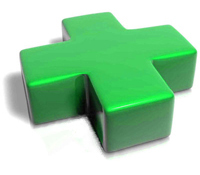

© 2000, 2001, 2002, 2003, 2004, 2005, 2006, 2007, 2008, 2009, 2010, 2011 Herbal Extract Company of North America. All rights reserved.
Use of the Herbal Extracts service and the herbal extract company's web site constitutes acceptance of our terms of use and privacy policy.
Linolenic Acid Print Print |
||||

Large amounts of EPA or DHA might result in prolonged bleeding time or nose bleeds. Taking fish oil supplements as a source of EPA and DHA can lead to stomach upset and "fishy" breath or burps in some individuals.
There is no Recommended Dietary Allowance (RDA) established for linolenic acid. The World Health Oranization (WHO) recommends that the essential fatty acids (both linolenic and linoleic acids) should comprise 3% to 4% of an adults daily calories. According to WHO, essential fatty acids should make up 5% to 6% of faily calories in children's diets.